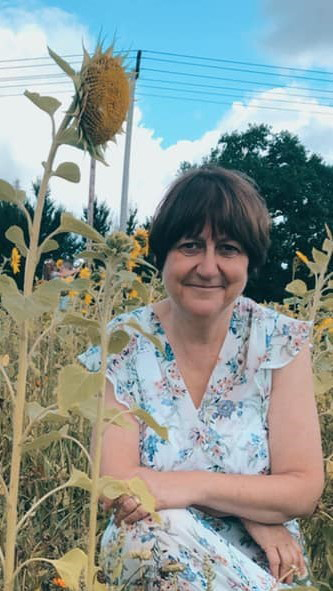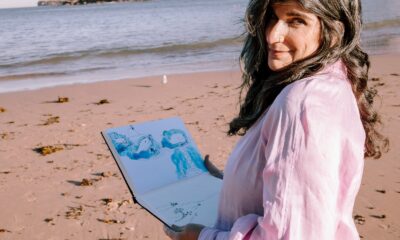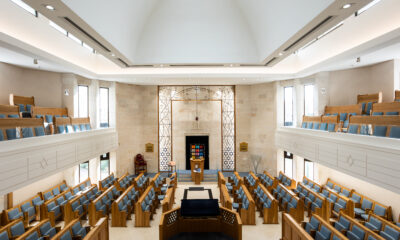
Lifestyle/Community

Novel look at the many ways of being Jewish
Author Tamar Hodes recently published a book called Mixed, which looks at different types of Jewish people and their lives. The SA Jewish Report spoke to her.
What drew you to becoming an author?
I didn’t ever decide to become a writer. It’s what I was, and am. I suspect writers are born, not made. I wrote from an early age and completed my first novel at 18. My father was an English teacher and wrote non-fiction books, and my mum was a painter, so it was a very creative household with books and paints everywhere. It wasn’t the most stable upbringing, but it was inspirational and never boring.
You have written a few books, but this is the first with a Jewish theme. What inspired it?
I don’t think I could have written this when I was younger. I’m 60 now, and have had the privilege of meeting many Jewish people in my lifetime. Growing up in north London in a Jewish area, I witnessed interesting ways of life and as an adult, living in non-Jewish areas, I have seen others. A lot of writing is thinking, and I have been planning this novel for years. There are Jewish elements in my other work too, but less overtly. Many of my short stories have a Jewish theme and, in my previous novel, The Water and the Wine, I explore Leonard Cohen’s life and Judaism on the Greek island of Hydra in the 1960s.
You were born in Israel, but lived in South Africa for part of your life before moving to the United Kingdom. Tell us a bit about your childhood in Israel and in South Africa.
My father was from Cape Town, and my mother from Oudtshoorn. In the 1950s, they each answered a call to work on a new kibbutz called Timorim in Israel, where they met. My brother, Gabriel, was born in 1958 and I was born in 1961 but by then, my father was working as a translator for the American embassy in Tel Aviv. My dad wanted to write and my mother to paint and they heard about Hydra, where there was an artistic community. They took us there for a year when we were six and three and then after that, my dad went to America to research his next book and my mum took us to Oudtshoorn for nine months. We were all reunited in north London on 12 January 1967. I was five years old. Sadly, my parents separated when I was 13, and each married again years later.
Why did you leave South Africa? What’s your relationship with South Africa now?
My parents thought it would be good to bring us up in London. I have been back to South Africa several times. I still have family in Cape Town, and it’s a beautiful country which I enjoy visiting. Likewise Israel. I was due to read at the Jewish Literary Festival in Cape Town in 2020, but it was cancelled due to COVID-19.
You make reference in your book to being a Jewish-Brit and a British Jew. Explain the difference.
The Jewish-Brit sees his/her Judaism as coming first before his/her nationality. The British Jew sees nationality first and Judaism second. There’s a difference in allegiance.
Where do you fall?
I see myself as a reform or progressive Jew. I’m involved in Jewish life, but in a modern way. The synagogue I belong to has men and women sitting together and women play an equal role in services. My Jewish identity is strong. For my 60th birthday, I had a Batmitzvah, which I found poignant. I feel British, having lived here for most of my life but with strong connections to South Africa and Israel.
Who and what inspired your various characters?
The range of characters are inspired by people I’ve met, but they are amalgamations of people. The novel isn’t about the Orthodox, but other Jewish perspectives are well represented, I hope.
Many grapple with living a Jewish life in a non-Jewish world. Do you believe it’s possible?
It’s possible, but there are different ways of doing it. In my novel, Ruth lives in a Jewish area, has a Jewish husband, and her children attend Jewish schools. She’s very involved with the shul. It’s vital to her that her children marry Jewish people, and that the tradition and heritage are passed down. Her sister, Miriam, lives in a non-Jewish area, has a non-Jewish husband, and her children attend a school where they are the only Jewish children. Her best friend, Mehreen, is Muslim. Miriam values her Jewish identity, but she wants to mix with the world at large. Then there’s their Uncle Gerald, who is against all religion, and many other characters with different Jewish perspectives. Each tries to find his/her own way, but aren’t that tolerant of each other.
Outside of being an author, what do you do? Tell us a bit about your family.
I’ve been married to David, who isn’t Jewish, for 38 years. We have two grown-up children, Ben and Daisy, and they each have a son, so I’m now a proud granny! I love all the arts: music, books, theatre, cinema, art exhibitions, and David and I both love travelling and nature, especially birds. I’m not in the best health, sadly, as I have an autoimmune condition which has damaged my kidneys, so I’m on plenty of medication. Luckily, writing is a sedentary activity.
What was your process in writing this novel? How was it different to the others?
Some of the novel was hard to write as I wanted to represent many points of view and not be judgemental, but other parts fell on the page like rain. Because the viewpoints are so varied, the structure needed to be too, so I mixed narrative, character chapters, and funny takes on Jewish recipes together, taking the plaited structure from a challah. I hope the novel is joyful, painful, complex, and thought-provoking – like Judaism itself.
What do you hope your readers will get from this book?
That they will accept that there are many different ways of being Jewish. As long as you aren’t hurting anyone, they’re all valid. Judaism is robust enough to embrace us all.
What are you planning for your next book?
I have an unpublished novel called Meadowland about a couple trying to save land from developers. I want to go back to that and see if I can improve it.










